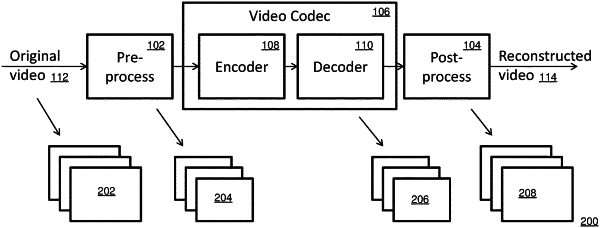| CPC H04N 19/117 (2014.11) [H04N 19/132 (2014.11); H04N 19/147 (2014.11); H04N 19/172 (2014.11); H04N 19/192 (2014.11); H04N 19/44 (2014.11); H04N 19/59 (2014.11); H04N 19/593 (2014.11); H04N 19/85 (2014.11)] | 18 Claims |

|
1. A real-time post-processing system that transforms MPEG on-demand media streams on mobile devices in a content-adaptive fashion, the system comprising:
a video optimizer software development kit (SDK);
an application layer that controls the video optimizer SDK; and
a mobile device operating and file system that interfaces with the video optimizer SDK,
wherein the video optimizer SDK, includes:
a video parsing stage that performs parsing and structuring of raw pixel frame buffers,
a preprocessing stage that normalizes the raw pixel frame buffers for further processing,
a video analysis stage that analyzes source content in an uncompressed format for video patterns and characteristics to select a set of encoding parameters in a specified video codec output format,
a budget scheme stage that estimates a set of budget parameters for each of portions and/or segments available in the source content,
an optimization stage that recompresses the source content with optimized encoding parameters in a content-adaptive manner to generate optimized content, and that writes the optimized content into persistent storage of the mobile device, and
a reassembly stage retrieves segments from the optimized content on the persistent storage of the mobile device, and combines the segments with an audio stream and/or a metadata stream information to generate a playable media stream in an ISO base media file format and/or a media file application specific format,
wherein the video analysis stage further includes a quick complexity inference method that estimates the set of encoding parameters by employing a complexity shape of a prior media stream.
|